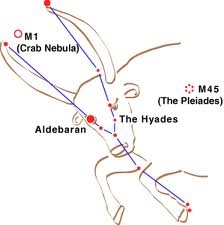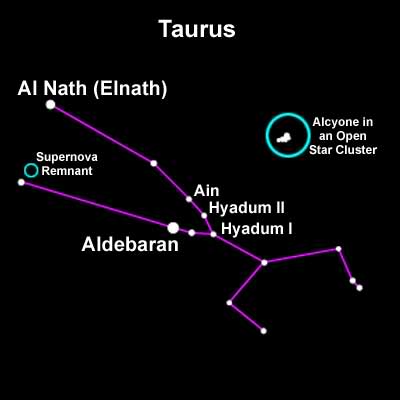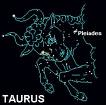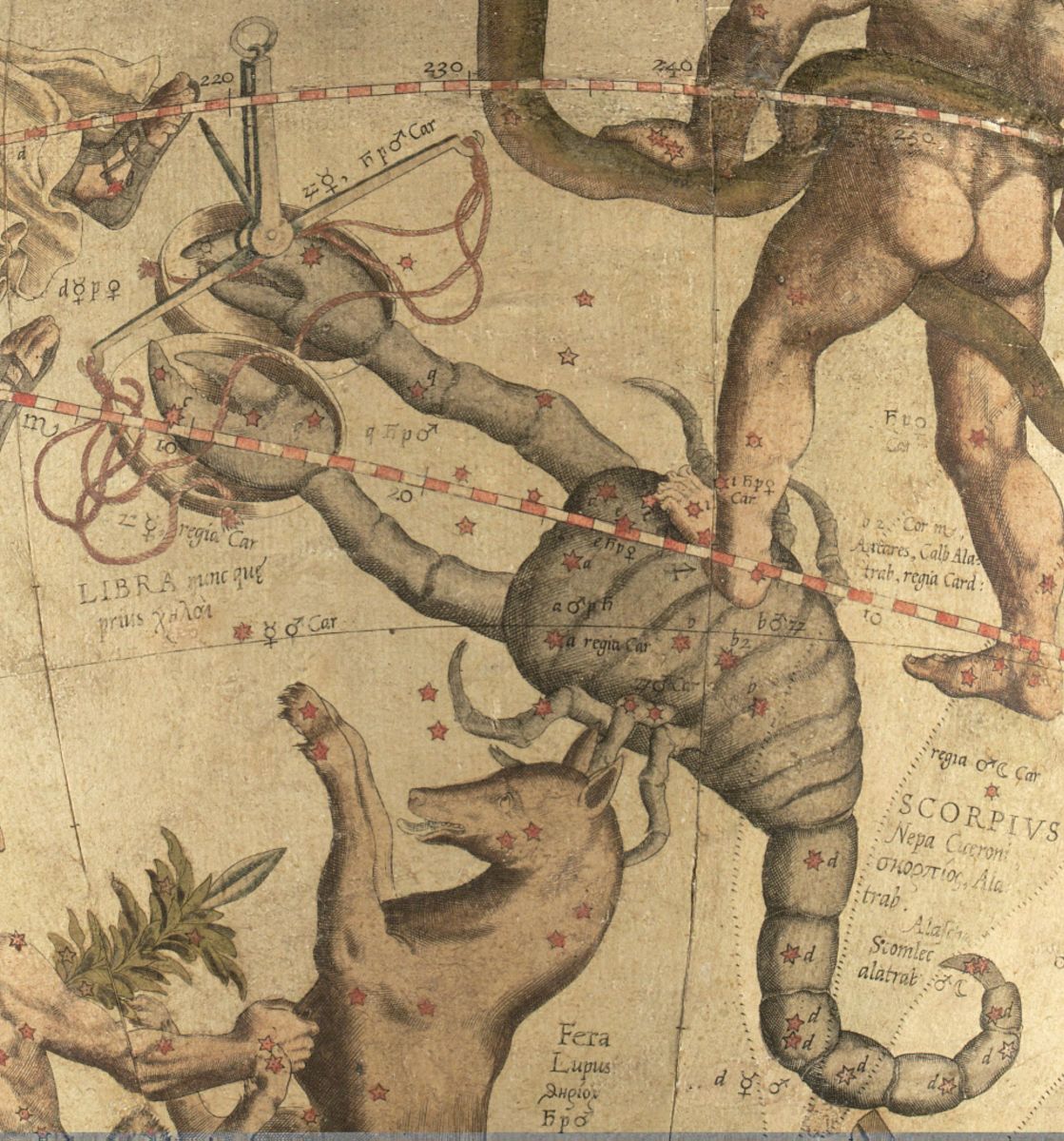Constellation Taurus

The Taurus Constellation
Taurus is one of the constellations of the zodiac. The name of the constellation is from the word "taurus" which is the Latin word for a "bull". The astrological symbol for the constellation is a stylized bull's head. Taurus is a large and prominent constellation in the northern hemisphere's winter sky, between Aries to the west and Gemini to the east; to the north lie Perseus and Auriga, to the southeast Orion, to the south Eridanus, and to the southwest Cetus.
Public domain photo courtesy Astronomytrek

Public domain photo courtesy Astronomytrek
Star Poll
How many constellations can you locate?

History and Mythology
Edited from Wikipedia
In the northeastern quadrant of the Taurus constellation lie the Pleiades, one of the best known open clusters, easily visible to the naked eye. The seven most prominent stars in this cluster are at least visual magnitude six, and so the cluster is also named the "Seven Sisters". However, many more stars are visible with even a modest telescope. The name of the star Aldebaran most likely comes from the fact that it follows the Pleiades during the nightly motion of the celestial sphere across the sky.
To the west, the two horns of the bull are formed by Beta Tauri and Zeta Tauri; two star systems that are separated by 8°. Beta is a white, spectral class B7 III giant star known as El Nath, which comes from the Arabic phrase "the butting", as in butting by the horns of the bull. It is the second brightest star in the constellation, and shares the border with the neighboring constellation of Auriga. Zeta Tauri is an eclipsing binary star that completes an orbit every 133 days.
The identification of the constellation of Taurus with a bull is very old, certainly dating to the Chalcolithic, and perhaps even to the Upper Paleolithic. Michael Rappenglück of the University of Munich believes that Taurus is represented in a cave painting at the Hall of the Bulls in the caves at Lascaux (dated to roughly 15,000 BC), which he believes is accompanied by a depiction of the Pleiades. However, his ideas have not been widely accepted.
The same iconic representation of the Heavenly Bull was depicted in the Dendera zodiac, an Egyptian bas-relief carving in a ceiling that depicted the celestial hemisphere using a planisphere. In these ancient cultures, the orientation of the horns was portrayed as upward or backward. This differed from the later Greek depiction where the horns pointed forward. To the Egyptians, the constellation Taurus was a sacred bull that was associated with the renewal of life in spring. About 4,000 years ago, the spring equinox entered Taurus. The constellation would become covered by the Sun in the western sky as spring began. This 'sacrifice' led to the renewal of the land.
In Greek mythology, Taurus was identified with Zeus, who assumed the form of a magnificent white bull to abduct Europa, a legendary Phoenician princess. In illustrations, only the front portion of this constellation are depicted; in Greek mythology this was sometimes explained as Taurus being partly submerged as he carried Europa out to sea. Greek mythographer Acusilaus marks the bull Taurus as the same that formed the myth of the Cretan Bull, one of The Twelve Labors of Heracles.
Taurus Video Tour
Books on Constellations









